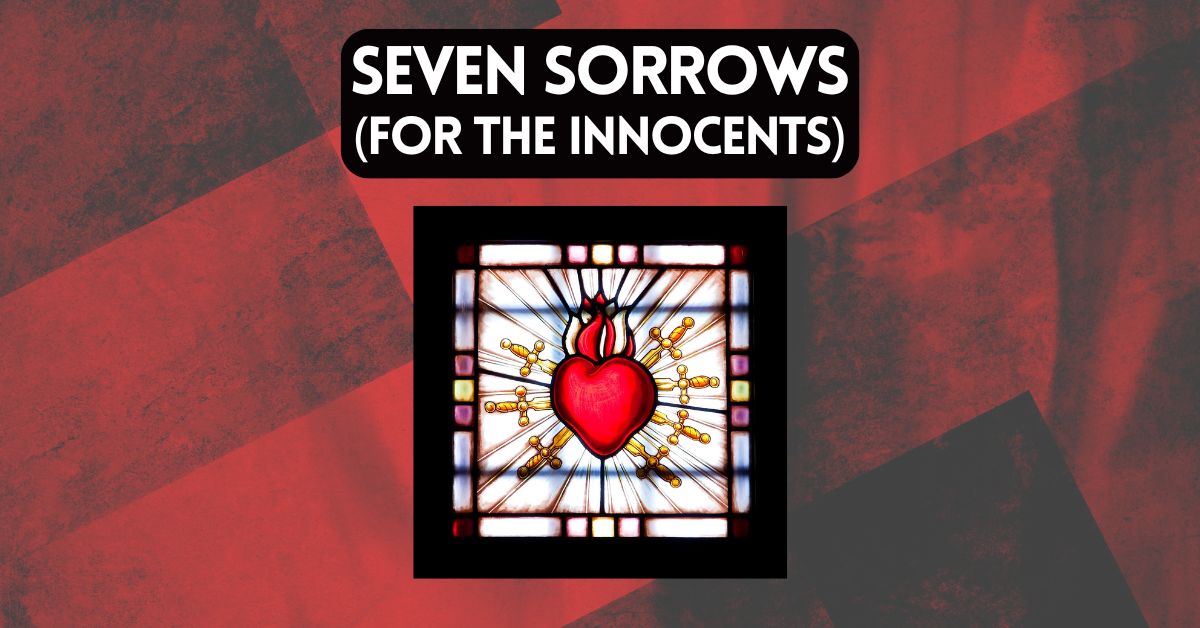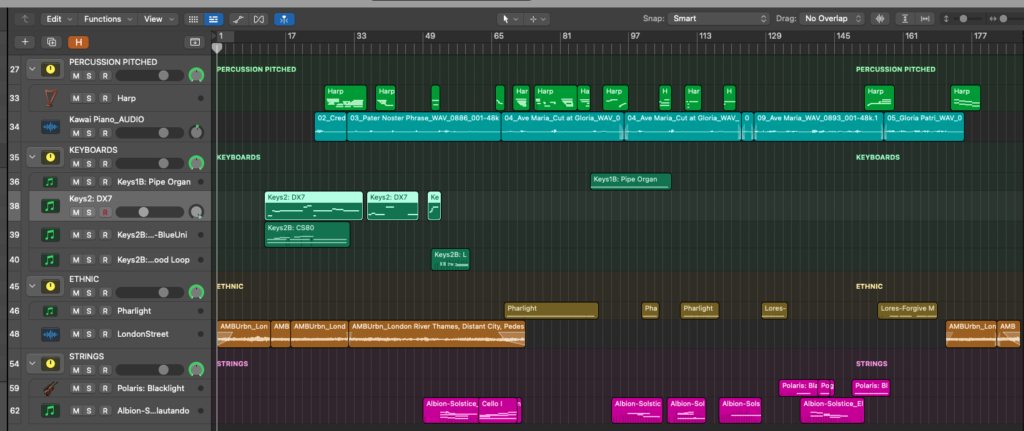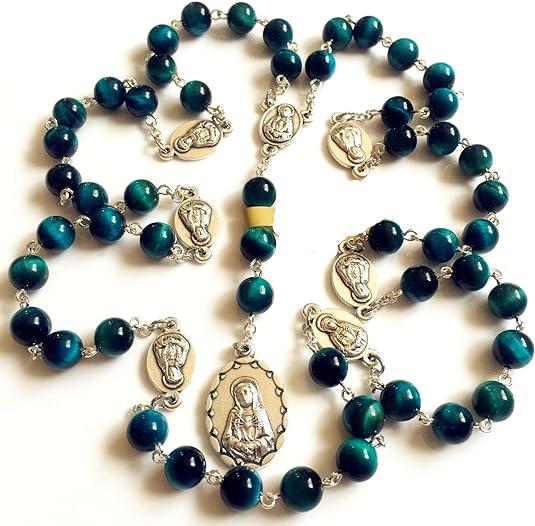The new album from Arthur Dobrucki. “I Might Be Praying” will be released fully in the summer of 2024. The opening track, “Morning at Erdington Abbey,” was released in February 2024. And the second single, “Seven Sorrows (For The Innocents)|,” was released on March 29, 2024.
Azure Hills Music contains affiliate links and is a member of the Amazon Services LLC Associates Program. As an Amazon Associate, we earn from qualifying purchases at no extra cost to you when you purchase using one of these Amazon links. Read our disclaimer and privacy policy for more information.
Listen to Seven Sorrows (For The Innocents)
Composing Seven Sorrows (For The Innocents)
One morning, while reading the news during breakfast, I came upon the story of Isabel Vaughan-Spruce. Standing on a street in Birmingham, England, she was approached by three police officers, who arrested her after she admitted she ‘might be’ praying inside her head. The event suggested the delicate rights of thought freedom and religious liberty within a social system embracing dystopian rule over its citizens.
The event stayed with me for months, culminating in an idea for the album “I Might Be Praying.” The song Seven Sorrows (For The Innocents) sets the stage for the scene on the album – a street in Birmingham where the prayer of the mind is replaced with a musical prayer.
This track begins with the sound of the street—cars passing by, people walking and talking—an urban landscape. Soon, a bed of deep orchestral and synthetic tones sets the stage for the musical prayer. Piano carries the primary melody fragments, inspired by Gregorian Chant, supplemented with short motifs from the harp.
Staging the musical prayer, the piano plays an incipit of the Pater Noster. This is followed with a seven-fold incipit of the Ave Maria chant echoing a meditation for the Seven Sorrows. In this piece, the Seven Sorrows are dedicated to “the innocents” – inspired by the prayers of Isabel Vaughan-Spruce. Concluding the seventh sorrow, the Ave Maria chant is completed and tagged with a short segment of the Gloria Patri. Combined, these segments form seven beads on a seven sorrows rosary with beginning (Pater Noster) and concluding beads (Gloria Patri).
Recording Seven Sorrows (For The Innocents)
The session for Seven Sorrows (For The Innocents) was prepared in Logic Pro X.
Instrumentation used on this track:
Albion Solstice
Augmented Strings (Arturia – Blue Universe)
DX7 (Arturia – Mellow Heart Pad)
Harp (Kontakt Orchestral Library)
LABS (Spitfire – Tape Orchestra Woods Loop)
Piano – Recorded on Kawai RX-6 grand piano with Shure KSM-137 small condenser microphones
Pipe organ (Kontakt Orchestral Library – Organ KH Floeten 1)
Pharlight (Kontakt)
Polaris (Spitfire – Blacklight)
Background on the Seven Sorrows
The Seven Sorrows of Mary is a traditional Catholic devotion that focuses on the suffering of the Virgin Mary during key events in the life of Jesus. These sorrows include:
- The Prophecy of Simeon
- The Flight into Egypt
- The Loss of the Child Jesus in the Temple
- Mary Meets Jesus on the Way to Calvary
- The Crucifixion and Death of Jesus
- Mary Receives the Body of Jesus
- The Burial of Jesus
These sorrows are often meditated upon and prayed over, both individually and collectively, to empathize with Mary’s grief and connect more deeply with Christ’s passion. In my album’s setting, the sorrows are intended for “innocents” lost.
One popular form of devotion associated with the Seven Sorrows is the Rosary of the Seven Sorrows. This 7 sorrows rosary is designed specifically for meditating on each of the sorrows while praying the Hail Mary prayer. It typically consists of seven groups of seven beads, each group representing one of Mary’s sorrows, with three additional beads in between for additional prayers.
During the recitation of the rosary, believers reflect on each sorrowful event in Mary’s life, contemplating its significance and offering prayers for the virtues associated with each sorrow. This devotional practice helps believers to draw closer to Mary and Jesus through empathy and contemplation while also finding solace and strength in Mary’s example of faithfulness amidst suffering.
Praying the Seven Sorrows Chaplet
The Seven Sorrows Chaplet is a devotional prayer tool Catholics use to meditate on the Seven Sorrows of Mary. It consists of a string of beads or knots, typically divided into seven groups, each representing one of Mary’s sorrows. The chaplet often incorporates specific prayers and meditations corresponding to each sorrow.
Here’s a typical structure of the Seven Sorrows Chaplet:
- Opening Prayers: Begin with an opening prayer, such as the Sign of the Cross and any other introductory prayers.
- Introductory Meditations: Reflect briefly on each of the Seven Sorrows of Mary. This may involve recalling the events associated with each sorrow and contemplating their significance.
- Grouping of Beads: The chaplet is divided into seven groups, each containing seven beads or knots, representing the Seven Sorrows.
- Prayers and Meditations: As you move through each group of beads, recite specific prayers and meditations associated with each sorrow. These may include prayers like the Hail Mary or the Seven Sorrows Rosary prayers, as well as reflections on the sorrowful events in Mary’s life.
- Closing Prayers: Conclude the chaplet with closing prayers, such as the Sign of the Cross, the Hail Holy Queen, or any other concluding prayers.
The Seven Sorrows Chaplet serves as a way for Catholics to deepen their devotion to Mary and to unite their sufferings with hers as they meditate on the sorrows she experienced throughout her life. It provides a structured and contemplative means of prayer, allowing believers to draw closer to Mary and Jesus through reflection on Mary’s role in salvation history.
Feast Day – Our Lady of Sorrows
The feast day for Our Lady of Sorrows is September 15.
#sevensorrows




